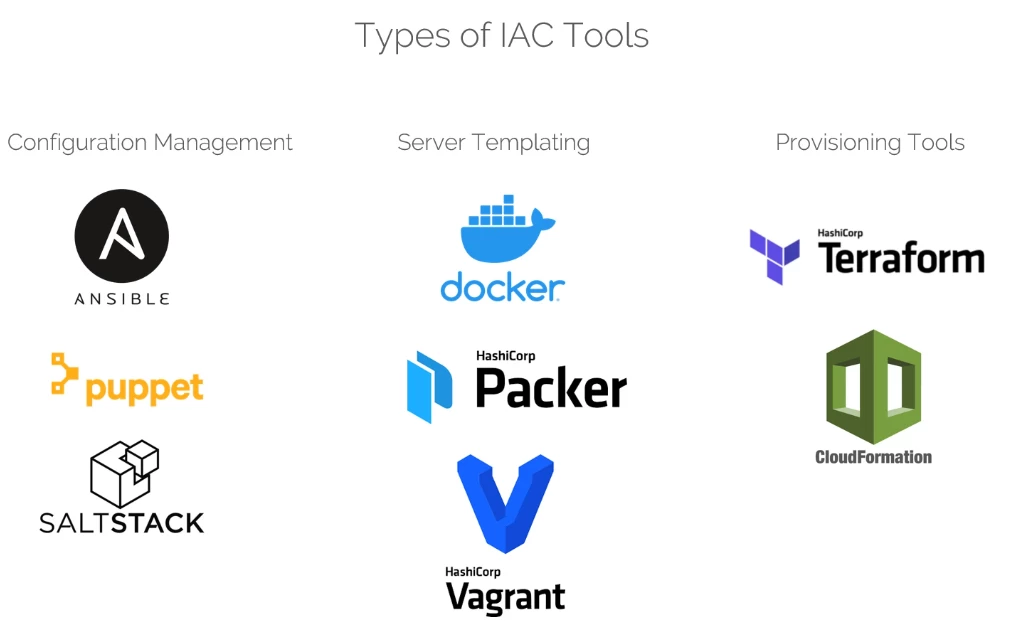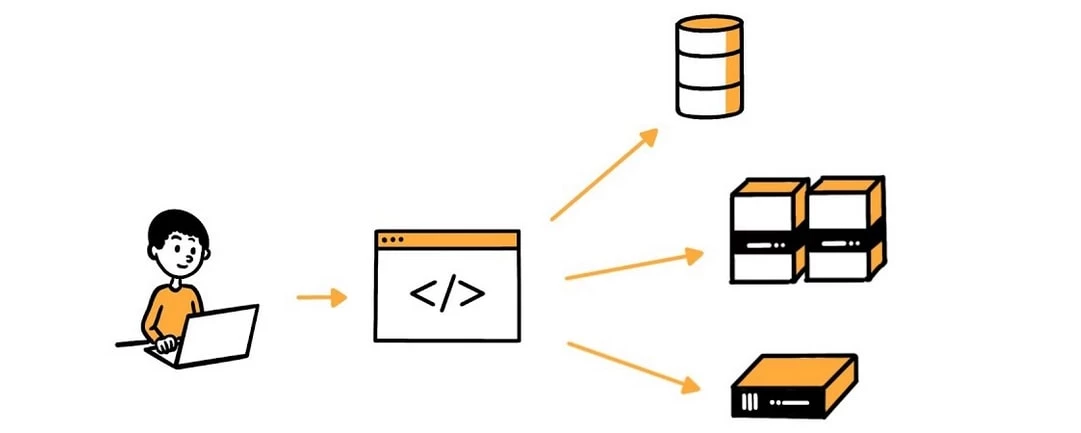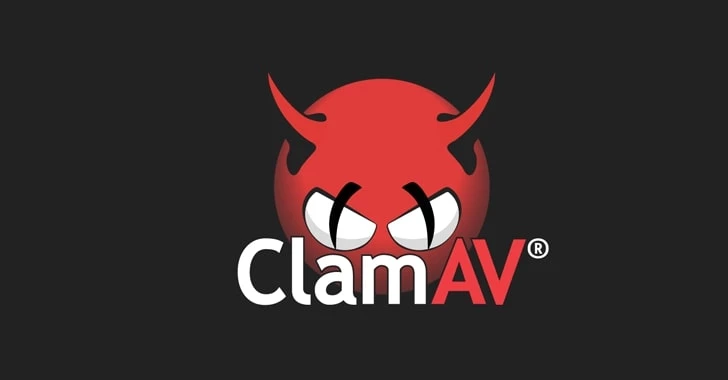Home / Blog / Devops and IAC tools1
Devops and IAC tools1

By EKbana on May 02, 2023
8m readHistorically, IT infrastructure was administered through manual processes, where IT operations personnel were responsible for setting up and upholding resources like servers, storage, and networking devices. However, this method was labor-intensive, prone to errors, and not easily scalable. It also presented difficulties in maintaining uniformity across multiple environments, such as development, testing, and production.
In today's fast-paced digital world, software development and deployment have become increasingly complex and demanding. To keep up with the ever-evolving technology landscape, organizations are adopting DevOps practices to streamline their software development and deployment processes. One key aspect of DevOps is Infrastructure as Code (IAC), which involves managing infrastructure in a programmable manner using code.
IaC involves using either declarative or imperative code to automate the deployment, configuration, and management of infrastructure components, such as servers, networks, storage, and applications. With IaC, infrastructure is defined in code, just like software applications are defined in code, and can be version controlled, tested, and audited.
Types of IAC tools
There are two main types of IaC in accordance to how they work: declarative and imperative . Declarative IaC uses configuration files to describe the desired state of infrastructure resources, while imperative IaC uses scripts to specify the steps needed to achieve the desired state. Both approaches have their advantages and
disadvantages, and the choice between them often depends on the specific requirements of the organization. In regards to implementation IAC tools can be divided into different types.

Configuration Management Tools are used to install and manage software on existing infrastructure resources such as servers, databases, networking devices. These tools use imperative code.
- Ansible: An open-source automation tool that allows IT teams to manage servers, networks, and applications at scale.
- Puppet: A configuration management tool that automates the deployment and management of software and infrastructure.
- Chef: An infrastructure automation platform that allows IT teams to automate the deployment, configuration, and management of infrastructure resources.
- Saltstack: A configuration management tool that allows IT teams to automate the deployment and management of software and infrastructure.
Server Templating Tools are used to create a custom image of a virtual machine or a container. These tools support both imperative and declarative approach.
- Docker: A containerization platform that allows IT teams to package applications and dependencies into containers for easier deployment and scalability.
- Packer: An open-source tool for creating identical machine images for multiple platforms from a single source configuration.
- Vagrant: An open-source tool for building and managing virtual development environments.
Provisioning Tools are used to provision infrastructure components using simple declarative code
- Terraform: An open-source infrastructure as code tool that allows IT teams to manage cloud resources across multiple providers.
- CloudFormation: A service provided by AWS that allows IT teams to define and manage infrastructure resources using declarative templates.
- Google Cloud Deployment Manager: A service provided by Google Cloud that allows IT teams to define and deploy cloud resources using declarative templates.
- Microsoft Azure Resource Manager: A service provided by Microsoft Azure that allows IT teams to manage and provision Azure resources using declarative templates.
Pros on Infrastructrue Of Code
Infrastructure as Code (IaC) offers several advantages for organizations that adopt it as a practice. Some of the key benefits include:
- Consistency and repeatability: By defining infrastructure as code, organizations can ensure that their infrastructure is consistent and repeatable across multiple environments. This helps eliminate errors caused by manual configuration and ensures that deployments are predictable.
- Faster time to market: IaC allows organizations to rapidly provision resources and applications, making it possible to deploy new applications and features faster. This helps businesses respond quickly to changing market conditions and stay ahead of their competitors.
- Improved collaboration: Infrastructure code can be version controlled, audited, and shared across teams, making it easier for teams to collaborate and manage infrastructure as a collective responsibility.
- Scalability and flexibility: IaC makes it easy to scale infrastructure up or down as needed, allowing organizations to adjust their infrastructure to meet changing demands.
- Enhanced security: By defining infrastructure as code, organizations can ensure that their infrastructure is configured securely and consistently across multiple environments, reducing the risk of security breaches.
Overall, IaC helps organizations manage their infrastructure more efficiently, reduce errors, and respond more quickly to changing business requirements.
Cons of Infrastructure of code
While Infrastructure as Code (IaC) has several advantages, it also has some potential drawbacks that organizations should be aware of. Here are some of the cons of IaC:
- Complexity: IaC can be complex and require a significant investment in learning and implementing new tools and practices. Teams need to be trained in new skills, such as coding, version control, and continuous integration/continuous delivery (CI/CD).
- Debugging and troubleshooting: Debugging and troubleshooting IaC can be more difficult than traditional infrastructure management approaches. Bugs in IaC can cause cascading failures that affect multiple systems, making it challenging to identify and fix issues.
- Lack of standardization: IaC can lead to a lack of standardization across teams, making it difficult to ensure that all infrastructure is configured consistently if all the team members aren't on the same page.
Although it's important to consider drawbacks, the popularity of IaC is growing, and this trend is expected to continue. As organizations move to cloud-based infrastructure and DevOps practices, IaC tools will be increasingly adopted. This makes it an exciting area to watch in the coming years.
We’re empowering
business growth for our clients.
Take the first step towards growth today.
Get Proposal
More From EKbana
 See All Blog
See All Blog




